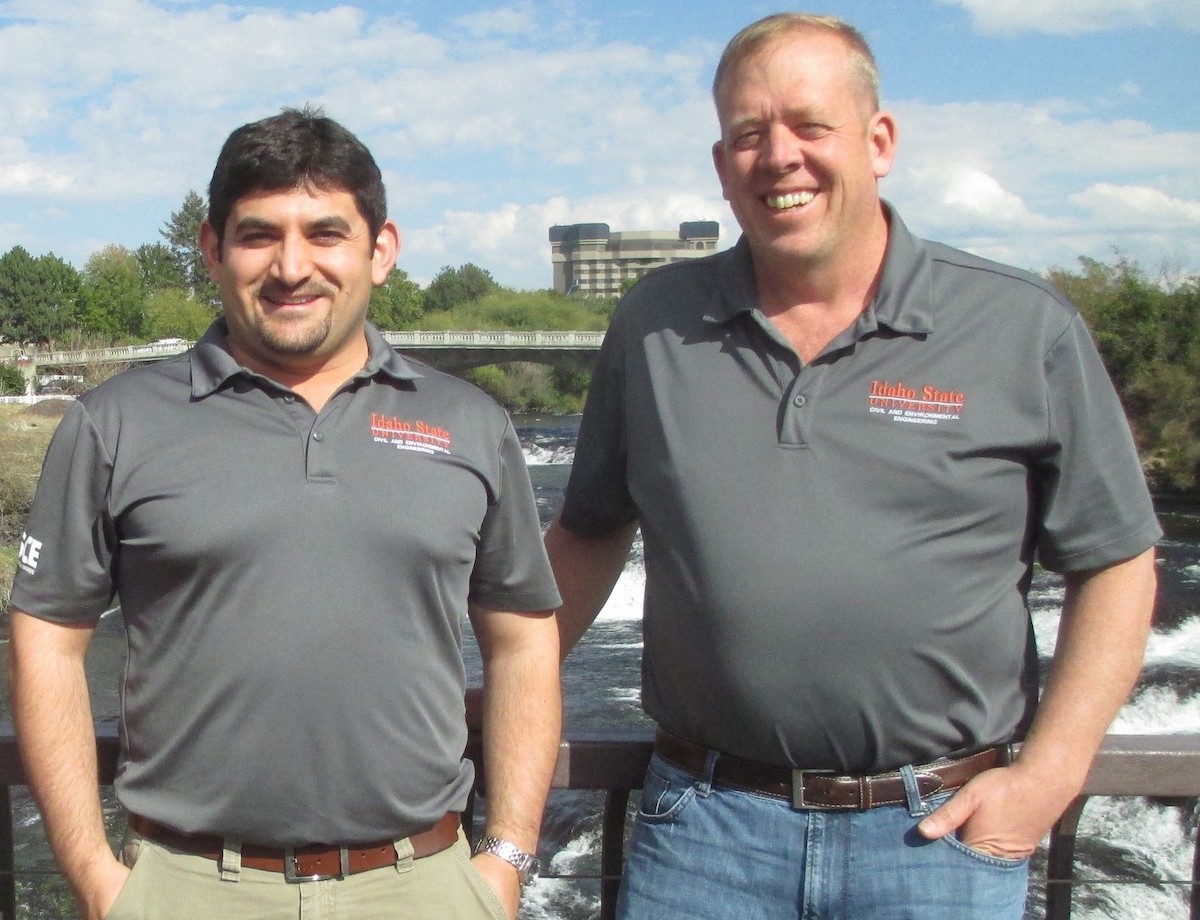ISU awarded more than $1 million to build Disaster Response Complex in Pocatello
September 23, 2019

ISU civil and environmental engineering faculty work in collaboration with INL, CAES
POCATELLO – A Disaster Response Complex, which includes the design and construction of a collapsed structure, will be built at the Idaho State University Research Park in Pocatello to provide training for first responders in a realistic catastrophic environment.
The complex, which will also provide research opportunities and curriculum development for ISU students, is funded by a nearly $1.1 million grant from the Higher Education Research Council of the Idaho State Board of Education through the Idaho Global Entrepreneurial Mission. The funding facilitates the ISU Department of Civil and Environmental Engineering researchers to collaborate with the Idaho National Laboratory (INL) and the Center for Advanced Energy Studies (CAES) on the project.
The principal investigator on the project is ISU’s Assistant Professor Mustafa Mashal, the co-principal investigator is Associate Professor and Chair Bruce Savage, both from the Department of Civil and Environmental Engineering. Mashal and Savage collaborated with INL’s Bryon Marsh who is the training and exercise coordinator in the National and Homeland Security directorate.
Mashal said the complex will be a unique facility in the region that can simulate various emergency and search-and-rescue scenarios using precast concrete elements.
“It would mark a new application of precast concrete in the world of civil engineering,” Mashal said. “The faculty in the Department of Civil and Environmental Engineering at ISU bring a wealth of knowledge not only from academic, but also industry backgrounds. We will utilize our experience to simulate disaster scenarios as practical as possible. We will also incorporate new technologies in emergency response. ”
The project consists of two phases. The first phase includes the design and construction of a collapsed structure to help train first responders in a realistic catastrophic environment with multiple scenarios such as earthquakes or hurricanes. The second phase will provide for training in more complex scenarios such as rescue with earthquake aftershocks, broken pipes or flooding, and terrorist threats.
“The funding provided by HERC will jump-start joint collaboration between ISU, CAES and INL in bringing a facility to Southeast Idaho that will be beneficial on many levels,” Savage said. “While training our first responders, it will also expand education opportunities for our students and expand research opportunities for ISU.”
INL and CAES intend to regularly use the facility to develop workforce talent.
“Emergency Responders need opportunities to train in order to develop and maintain the unique skills required to effectively respond to manmade and natural disasters,” Marsh said. “It is exciting to be part of this project because the benefits of increasing our responder readiness is the fact that lives will be saved. Our goal at INL is to support the Disaster Research Complex with the best science and research available so that our responder community is always ready.”
Site visits and meetings throughout the country were held to determine the facility’s requirements, and a physical demonstration model was built. ISU has agreed to provide space for the facility on its nearly 300-acre business park bordering Alvin Ricken Drive.
The collaborative aspects of the project date to early 2017, when Mashal met Marsh at the CAES Security Collaborative Research Planning Meeting at INL. ISU and INL collaborators jointly worked to develop the project and eventually applied for the HERC-IGEM Grant.
HERC, a six-member board responsible for implementing the research policy adopted by the Idaho State Board of Education and administering the grant programs created by the state Board, approved funding for three years.
HERC’s grant programs are designed to stimulate competitive research at Idaho’s institutions. According to its web site, HERC has “worked diligently to attract projects that serve to strengthen the research capabilities and contribute to economic development” statewide.
“This grant is an important investment by the state of Idaho in shaping how first responders from our state, region and nation provide assistance in times of need,” said Scott Snyder, dean of the ISU College of Science and Engineering and interim vice president for research. “There is a clear need for this type of training complex in the Intermountain West, and Dr. Mashal and his partners at ISU, INL and CAES have the knowledge and skills to fill this critical training gap.”
Idaho State University, a Carnegie-classified doctoral high research activity university and teaching institution founded in 1901, attracts students from around the world to its Idaho campuses. At the main campus in Pocatello, and at locations in Meridian, Idaho Falls and Twin Falls, ISU has nine Colleges, a Graduate School and a Division of Health Sciences that together offer more than 250 certificate and degree programs. More than 12,000 students attend ISU. Idaho State University is the state's designated lead institution in health professions.
Categories:

